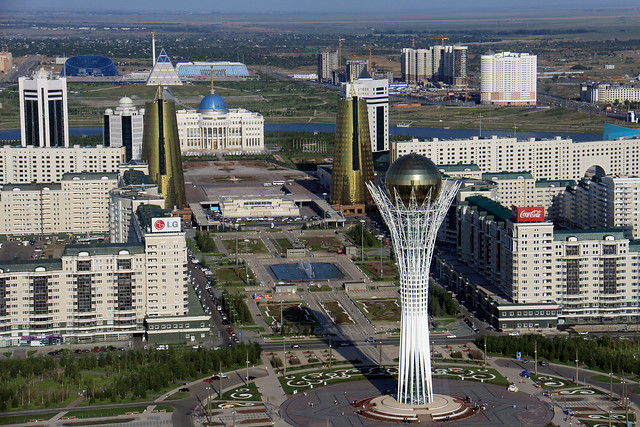Economy
Recent Economic Developments
Kazakhstan¡¯s economy slowed to 3.2% year-on-year (YoY) in the first half (H1) of 2024, down from 5.3% a year ago, with notable weaknesses in investment and government spending. Investment declined by 3.5% Yoy in real terms (compared to +13.3% in H1 2023), and government spending fell by 4.5% YoY (+17% previously). Consumer spending, proxied by total sales growth, slowed to 3.9% YoY (+10.4% in H1 2023), reflecting waning consumer demand.
On the supply side, industrial production grew tepidly at 2.7% YOY in H1 (+3.8% in H1 2023) due to lower oil production (-1.6%). Construction growth edged up to 8.6% (+7.7%), while services slowed to 3.3% YOY (+5.5%). The official unemployment rate remained constant at 4.7% in Q2. To bolster living standards, the government implemented a 21.4% nominal increase in the minimum wage, effectively doubling the amount since 2021 (+70% in real terms).
Consumer price inflation decreased from 9.7% in December 2023 to 8.5% YoY in August and September, still above the target rate of 5%. The central bank trimmed its policy rate by 25 basis points to 14.5% in June, maintaining a tight policy stance. A reduction in goods imports and an increase in service exports improved the trade balance, shifting the current account to a surplus of $0.8bn in H1 2024, compared to a deficit of $5.0 billion in H1 2023. FDI inflows declined by 56.3% YoY to $2.2bn. The fiscal deficit expanded to 1% of GDP from 0.4% in 2023 due to slower economic growth hitting revenues. The banking sector remains resilient, with real bank loans increasing by 13.8% YoY in June, driven primarily by consumer borrowing.
Economic Outlook
Economic growth in Kazakhstan is projected to temporarily rise to 4.7% in 2025, driven by increased oil production, before gradually slowing to a long-term potential rate of 3.0¨C3.5%. Private consumption and net exports, particularly higher oil exports, will be the primary growth drivers, while investment activity is expected to remain subdued, contributing modestly in 2025¨C2026.
Inflation is anticipated to decline gradually in 2025 as energy and food prices stabilize, but persistent service sector inflation will keep it above the 5% target until late 2026. Ongoing tariff adjustments and potential fiscal imbalances may hinder the disinflationary trend.
The current account deficit is projected to narrow in 2025 and beyond, supported by higher oil exports. The fiscal deficit is expected to decrease gradually from 2.1% of GDP in 2024 to 1% in 2026 through increased revenue mobilization, primarily via tax code reforms, and more targeted budget spending. The revised tax code is likely to include higher income taxes for businesses and households, along with increased levies on luxury items. However, uncertainty around revenue gains and growing pressures for social and infrastructure spending may pose risks to meeting these fiscal goals.
Poverty is expected to fall to 7.6% in 2024, 6.3% in 2025, and 5.7% in 2026 as growth continues and inflation subsides.
Significant downside risks to economic growth include a decline in global oil demand and prices, increased budget spending, reversal of fiscal consolidation, and the growing frequency of extreme weather events, which threaten agricultural output, infrastructure, and economic stability.







